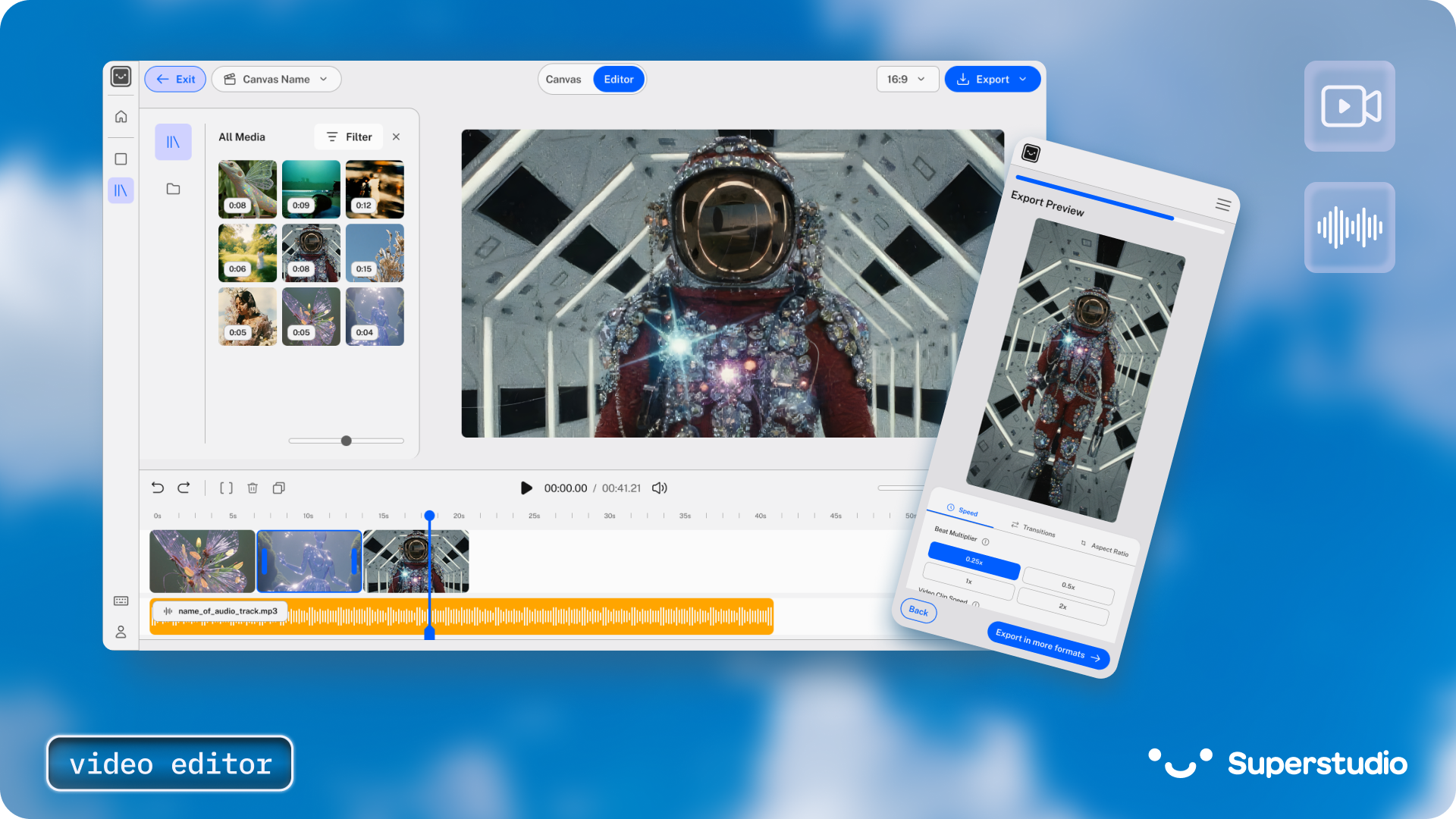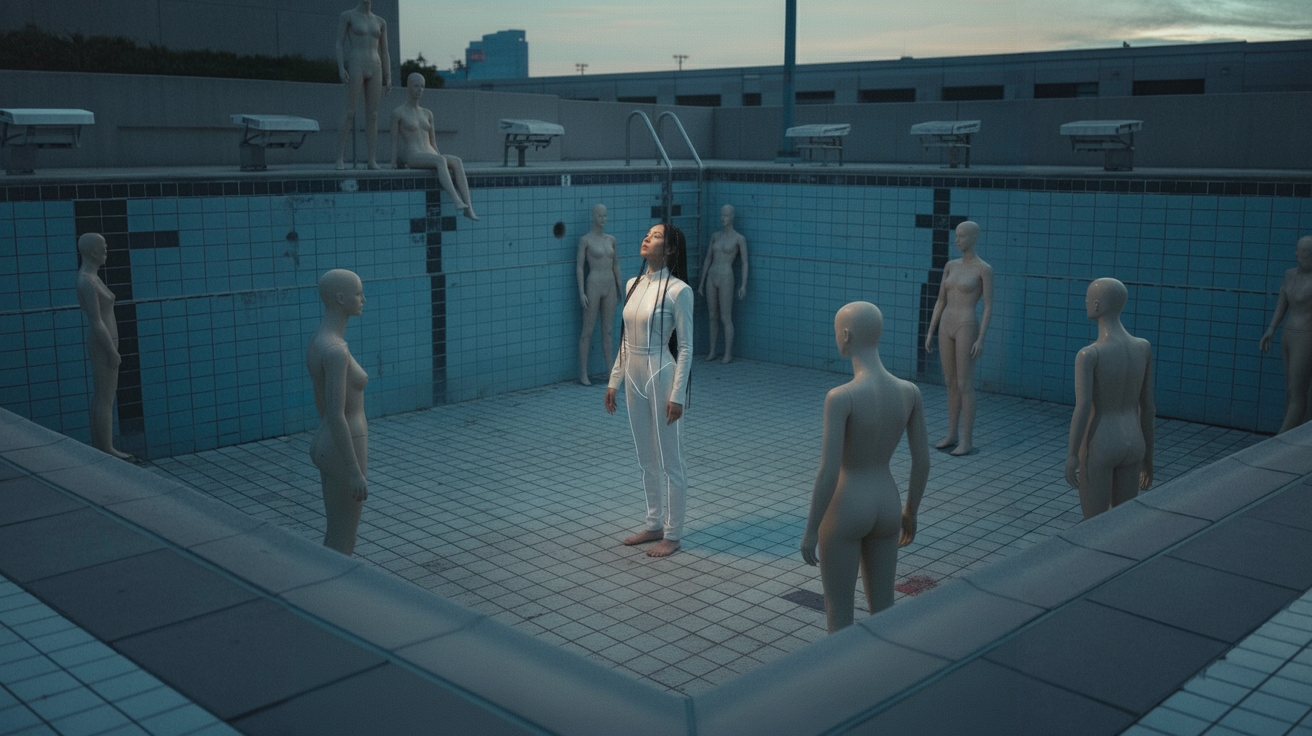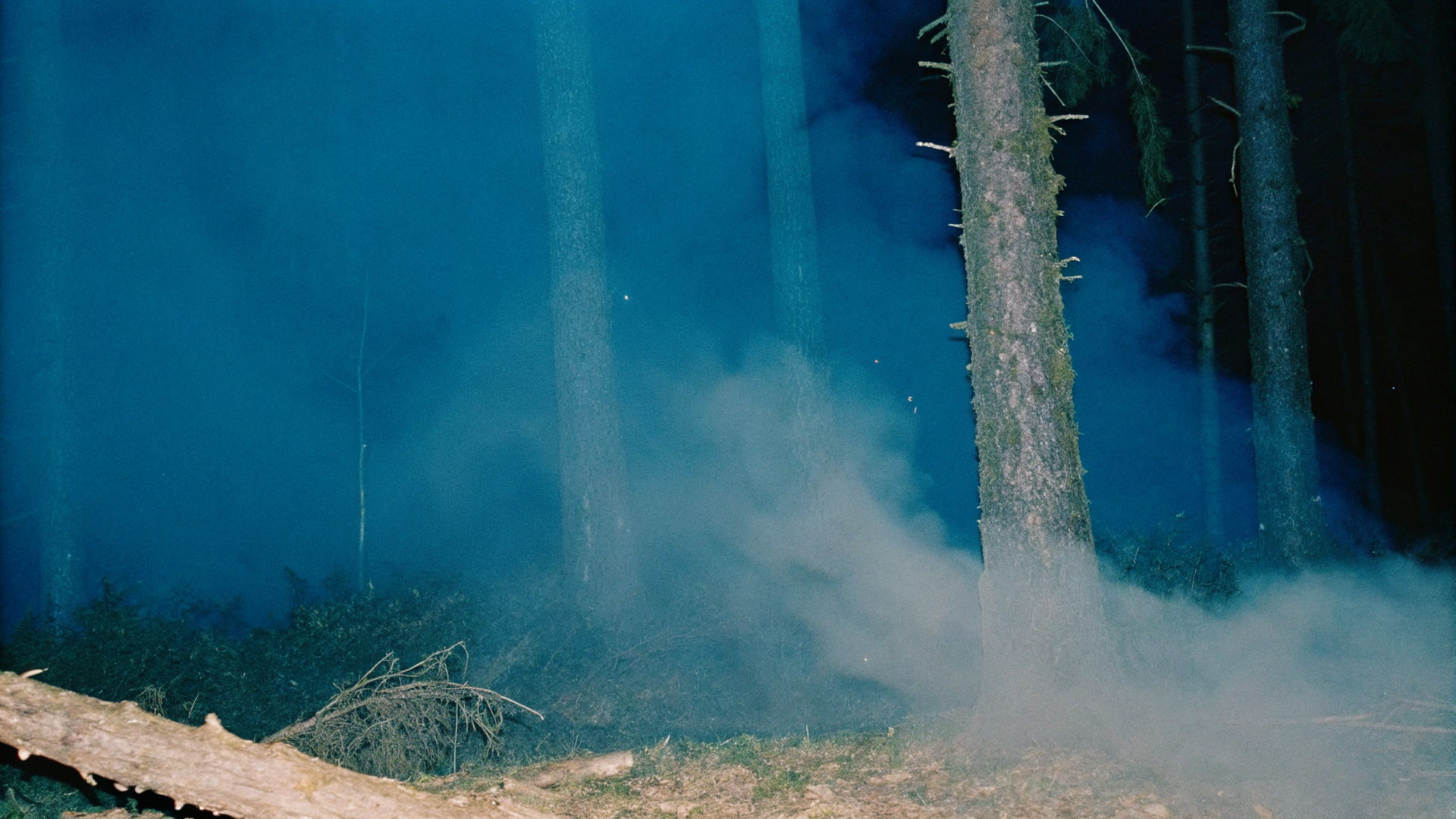Tom Furse is no stranger to transformation. As a founding member of the band The Horrors, he’s spent over a decade bending genres—channeling psychedelia, synthwave, and minimalism into songs that feel both retro and futuristic. In recent years, his practice has broadened beyond music. Furse has been experimenting with AI tools like Superstudio, which he used in the making of his latest music video, Jest.
Jest is a clown—or, more precisely, a strange, painterly figure that emerged unexpectedly from a model he trained on himself. “As soon as I saw myself in the clown,” he says, “the clown in me knew.” The character became a cipher—one that fit neatly into his ongoing self-portraiture, while also giving shape to a new piece of music.
In this conversation with writer Günseli Yalcinkaya, Furse reflects on his fluid relationship to AI, the increasingly surreal convergence of disciplines, and how the right tools let artists make things that once felt out of reach. He speaks candidly about the risks and thrills of making art right now—and how, even in a clown mask, you might just be showing your truest self.
Jest is available on Bandcamp until it drops on all DSPs May 26.
Congrats on “Jest”! What’s the idea behind the clown?
I didn’t initially know what I was going to make in Superstudio, but after training the model on myself and messing around with some prompts, this clown character quickly emerged and I just knew this was a direction I could get down with. It fit neatly with my existing self-portrait work, and was also the perfect excuse to make a video for this piece of music I’d been working on. I had no idea that the character was called Pennywise. If anything, I was channeling Cindy Sherman’s clown series.
“After training the model on myself, and messing around with some prompts, this clown character quickly emerged […] it fit neatly with my existing self-portrait work.”
What’s the relationship between your music and AI-led visual practice?
For me, music has always had this internal visual language in my brain. Not synesthesia exactly, but certain sounds do form certain shapes and textures, and sometimes I have a very clear visual scenario in my mind – that mental image would inform the energy of the music. Bringing machine learning into the mix means I have the means to realize those visual ideas and now I find visuals inspire music and music inspires visuals to the point that the two practices are now interlocked. For example, the way the beat flows in “Jest” is more geared towards choreographic movement than a dance floor, and that was partly because I knew I’d be editing moving image to the track.
“Music has always had this internal visual language in my brain. Not synesthesia exactly, but certain sounds do form certain shapes and textures, and sometimes I have a very clear visual scenario in my mind.”
How would you describe your relationship to AI as a creator?
I’ve been able to move away from being purely a sonic artist to having this really wide creative practice where so much feels possible now, so it’s been a really beautiful few years for me artistically. I found myself directing music videos with teams of 30 people and I’m thinking how the hell did I get here? But it was being given the means to more easily experiment that took me there, and that’s the attraction for me.
AI tools are developing so fast, how do you see it changing the way we create art and music?
On the visual side, we’re likely to see a steady increase in fidelity, quality and increasingly easy ways of making work that tells consistent narratives. Once that happens, there’s going to be an unholy avalanche of AI slop. As individuals and studios experiment, they’ll start to see how small a team they can work with to create tangible narrative content that would have been wildly out of their budgetary ranges before, or will be exercises in maximising profit margins.
So, we’re gonna see some absolute horse shit accompanied by some truly incredible work as film making starts to break free of its existing financial constraints. The existing structures of that world have all the power when it comes to what’s being made and what stories are being told, so it’s going to be interesting to see what narratives people will start exploring on their own terms.
For music, I think we’ll see roughly the same arc, but substitute studios DSPs, especially Spotify, who will not only be sneaking their own content into playlists but will probably also generate their own podcasts, audiobooks etc to avoid paying humans where possible. Simultaneously, a whole host of new ways of synthesizing and processing audio has emerged and I’m already integrating that into my music—including on “Jest”.
“As individuals and studios experiment, they’ll start to see how small a team they can work with to create tangible narrative content that would have been wildly out of their budgetary ranges before.”
What’s next for AI?
For the creative disciplines in general, for better or for worse, there will be an increasing convergence between them all as the barriers start to dissolve. What we were already seeing realized with CGI in Skibidi Toilet, we’re now seeing realized with AI in things like Italian Brainrot—but now, there are consistent characters which exist across a spectrum of amateur crowd-generated imagery, videos and deep fakes, marketing an entire franchise without a clear owner. I wonder how long until one of the big studios picks up a big enough meme as a new franchise? Or will this kind of internet meme-media remain too weird and intimidating for the right people to ok them for a large scale project?
“For the creative disciplines in general, for better or for worse there will be an increasing convergence as the barriers start to dissolve. ”
When I think of the future, I feel nervous. On one hand, I’m excited for all the possibilities that lie ahead of me, which is an enormously empowering feeling as an artist. But I have concerns about the wider economic impact, not only already fragile creative industries, but the world economies at large. Researchers and tech companies are dropping new models every week – by the time you’ve mastered one model, there’s a better one out to get your head round, and no-one really knows how it’s going to play out. Things are going to get weirder and we will likely all suffer to some extent – the curse of living through interesting times. Of course, every action has an equal reaction, so I also think there’s going to be an increased emphasis on ‘human made’ content, which will be a valuable counterweight.



